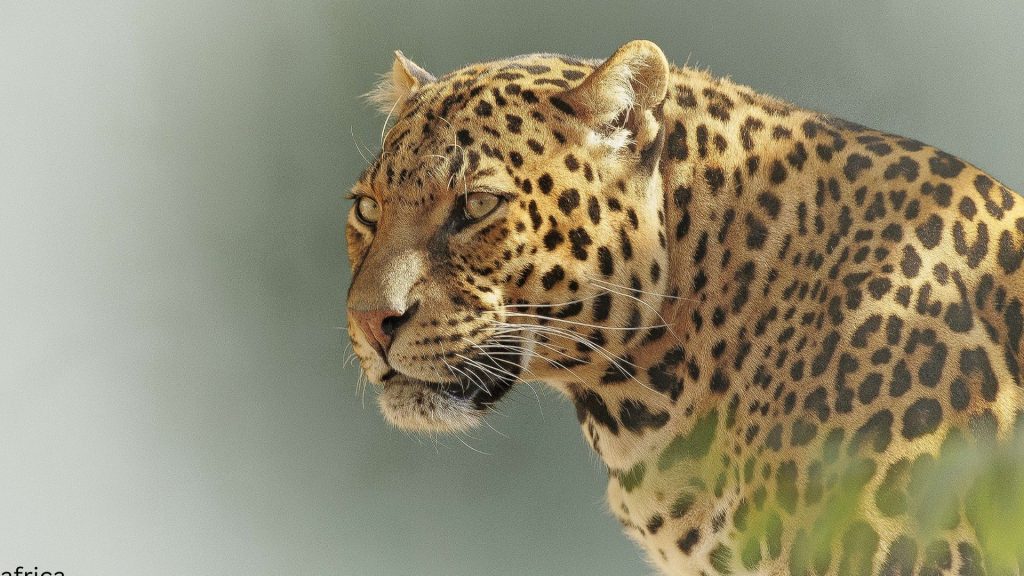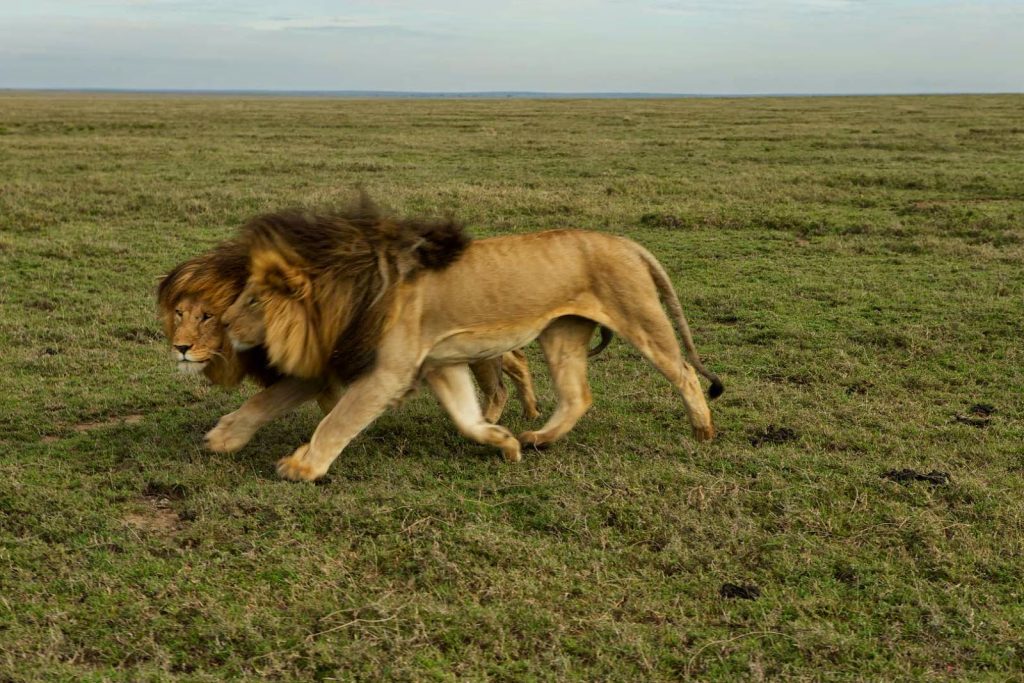Honey badger
The honey badger is a terrestrial animal with short legs that inhabits forests, steppes, and mountains in Africa and Asia. You might have heard another name for the same animal – ratel. It’s rarely seen, but when it happens, you can recognize it by the white-gray woolly coat on its head, back, and tail, contrasting with the black color of its face, sides, and lower body. Fully black honey badgers also exist but are limited to one subspecies.
This omnivorous animal’s favorite treat is bee larvae, for which it digs through beehives. People noticed this behavior, earning it the nickname “honey badger.” Although it also eats honey, its main treat is the larvae and pupae of bees.
Where do honey badgers live? They are found almost throughout sub-Saharan Africa, as well as in Mali, Mauritania, Western Sahara, and Morocco. Their Asian habitat includes parts of Western Asia (Middle East) and the Indian Peninsula. As of today, about 12 subspecies are recognized. These include Persian ratel, Nepalese ratel, Indian ratel, black ratel, white-backed ratel, Lake Chad ratel, and speckled ratel, among others.
The badger’s most famous characteristic is its fearlessness, even in the face of much larger opponents. When a massive animal, such as a buffalo, invades the honey badger’s territory, this member of the weasel family launches an attack. A cornered honey badger is extremely dangerous. It will fiercely defend itself and its territory, raising fur, showing its sharp teeth and long claws, hissing and growling, and emitting a foul odor. Rest assured if the opponent doesn’t retreat – the honey badger will fiercely engage in battle.
Honey Burger Facts
- Despite being called a honey badger, it eats far more than just honey. The ratel is an omnivorous and incredibly voracious animal.
- It made it into the Guinness World Record as the most fearless animal.
- Honey badgers have been observed attacking lions and buffaloes.
- They are not afraid of scorpion stings and bites from venomous snakes.
- Despite their short legs, they can run dozens of miles daily.
Why are honey badgers so strong, fearless, and aggressive?
Legends surround the extreme fearlessness of honey badgers. Wildlife documentary enthusiasts know that honey badgers hunt venomous snakes, fearlessly confront larger opponents, and sometimes even attack lions, buffaloes, and horses. Often, they emerge victorious from these battles.
How is this possible? One of the secrets lies in the honey badgers’ very thick skin. It is challenging to bite through with teeth or pierce with, for example, porcupine quills. Some describe their skin as “loose,” emphasizing its elasticity and stretchability. This allows a captured honey badger to twist, turn, and continue attacking its assailant. Despite its pliability, the skin is quite dense – locals say that neither arrows nor machete blades penetrate it.
For attacks, honey badgers have short but powerful paws with long, curved claws. Nature bestowed these claws upon them for digging burrows and destroying termite mounds and beehives. However, the fearlessness of honey badgers allows them to employ their claws in battle. The powerful paws help them fend off attackers and pursue prey for an extended period until it succumbs, thoroughly exhausted. So, their ability to drop a “stink bomb” is not their only weapon!
But what about snake venom? It appears that honey badgers have an antidote in their system. It is known that honey badgers hunt venomous cobras, for example. If a cobra bites the honey badger before dying, the venom may induce a kind of lethargy. However, about two hours later, the animal wakes up, fully reenergized, and calmly finishes consuming the slain cobra. And that is if the snake’s fangs manage to catch the badger and penetrate its skin.
There are speculations about how this might work. Honey badgers are not the only animals capable of neutralizing snake venom. This ability is also present in opossums, hedgehogs, skunks, mongooses, and some other animals. For instance, mongooses have a different protein composition in their muscle and nerve cells, preventing toxin molecules from binding and causing paralysis. Other animals have substances in their blood that neutralize venom toxins. The specific physiological mechanism of protection against venom in honey badgers remains unknown.
Another defense mechanism is the ability to release a liquid with a strong, unpleasant odor in dangerous situations. Enlarged anal glands are responsible for this. The foul smell can deter insects like bees and larger animals that honey badgers might encounter. In this aspect, they resemble skunks.
Finally, let’s talk about bee stings. How do honey badgers avoid the consequences when infiltrating a beehive? In most cases, honey badgers don’t feel the stings and are unaffected by them, thanks to their thick skin. There is a widespread belief that bees don’t harm them at all. However, there are rare instances of honey badgers trapped in beehives, enduring prolonged attacks, and eventually succumbing to numerous stings.
Nevertheless, more often than not, honey badgers remain alive and nearly unharmed. Their character, marked by bravery and active defense quickly turning into aggression, plays a crucial role. In this aspect, honey badgers resemble their family relative, the wolverine, which inhabits northern latitudes. While the honey badger has been spotted attacking lions and buffaloes, wolverines sometimes engage bears in a similar manner.
Natural threats to honey badgers
Honey badgers are believed to have almost no natural enemies, as many large predators know their character and avoid dealing with them. However, there are cases where lions and leopards have killed honey badgers. The victims were typically old or weakened individuals. In most cases, a healthy honey badger can drive away predators. For example, there is a documented case where a honey badger engaged in battle with 6 lions and escaped relatively unharmed!
However, in some instances, predators of honey badgers can include hyenas, leopards, lions, and Nile crocodiles. Generally speaking about threats, the only constant problem for them is humans. People hunt honey badgers for meat and use parts of these robust animals for traditional medicine. The local population believes that the strength and bravery of this animal are transferred if a part of the honey badger’s body is obtained.
Another problem is beekeepers setting traps for honey badgers to protect beehives. Sometimes, humans poison them to prevent them from approaching beehives and chicken coops.
All in all, this does not pose a significant threat to the species. According to the International Union for Conservation of Nature (IUCN), although the overall honey badger population is decreasing, the species is not seriously threatened. Its conservation status is of Least Concern. The secluded lifestyle and the remoteness of honey badgers’ habitats from humans primarily contribute to their survival. However, conservation biology classifies them as endangered in some particular habitats.
Natural threats to honey badgers
Honey badgers are believed to have almost no natural enemies, as many large predators know their character and avoid dealing with them. However, there are cases where lions and leopards have killed honey badgers. The victims were typically old or weakened individuals. In most cases, a healthy honey badger can drive away predators. For example, there is a documented case where a honey badger engaged in battle with 6 lions and escaped relatively unharmed!
However, in some instances, predators of honey badgers can include hyenas, leopards, lions, and Nile crocodiles. Generally speaking about threats, the only constant problem for them is humans. People hunt honey badgers for meat and use parts of these robust animals for traditional medicine. The local population believes that the strength and bravery of this animal are transferred if a part of the honey badger’s body is obtained.
Another problem is beekeepers setting traps for honey badgers to protect beehives. Sometimes, humans poison them to prevent them from approaching beehives and chicken coops.
All in all, this does not pose a significant threat to the species According to the International Union for Conservation of Nature (IUCN), although the overall honey badger population is decreasing, the species is not seriously threatened. Its conservation status is of Least Concern. The secluded lifestyle and the remoteness of honey badgers’ habitats from humans primarily contribute to their survival. However, conservation biology classifies them as endangered in some particular habitats.
Honey badger homes
A typical honey badger habitat consists of a burrow digging with its long claws on the front paws. It is like a tunnel that can be up to three meters (9.8 feet) long. Moreover, the animal can dig up to one and a half meters (4.9 feet) deep. It takes about 10 minutes for it to dig a tunnel in solid ground.
Honey badgers often take over other animals’ homes, breaking into ready-made burrows of aardvarks, foxes, mongooses, and warthogs. Sometimes, they use vacant termite mounds.
It is not a problem for them to spend the night in rocky terrain. In this case, honey badgers arrange their den in rock crevices. Tree hollows also serve as suitable sleeping spots. Honey badgers are versatile animals for housing arrangements, just like their diet.



